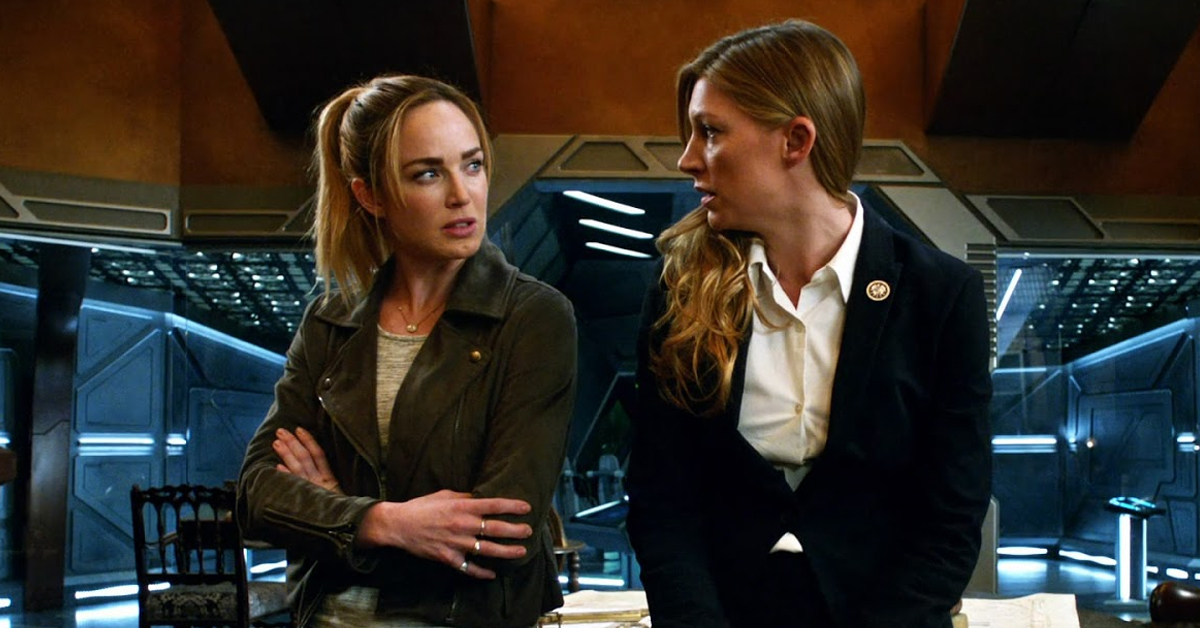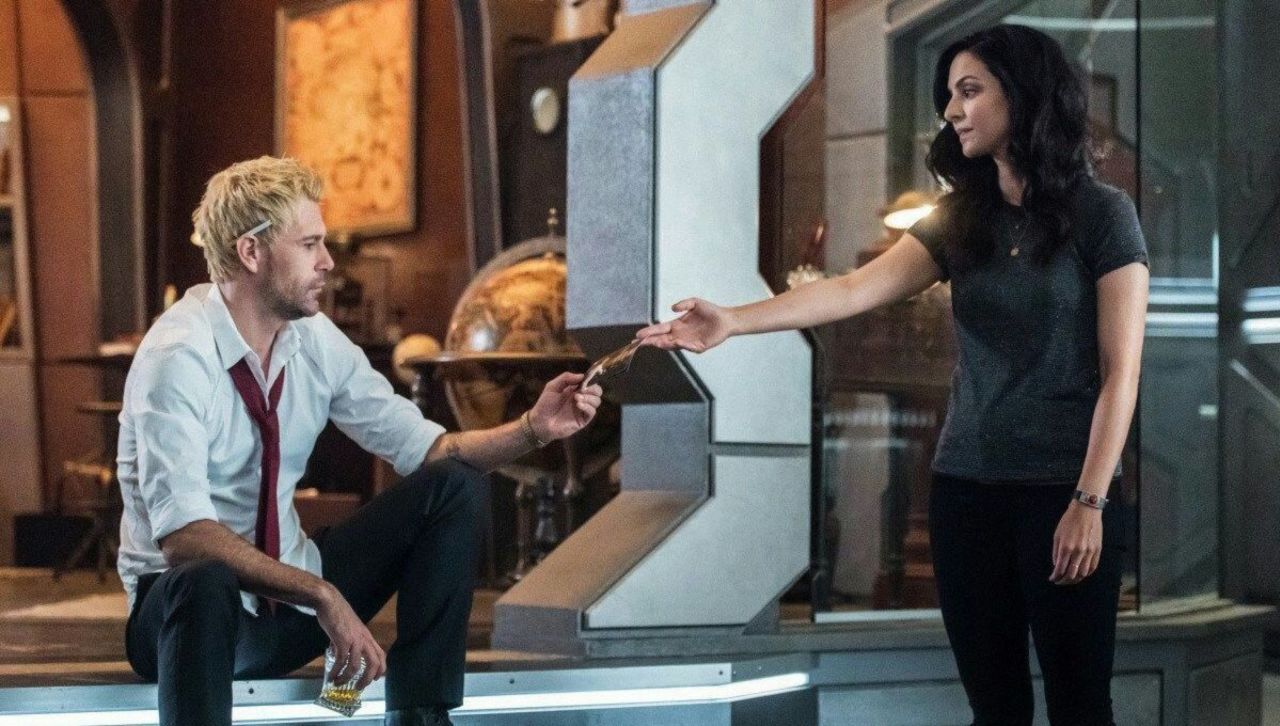Legends of Tomorrow Has the Solution to the Superhero Romance Problem


In a pop culture world heavily saturated with superhero shows and movies of all styles and universes, there is a shocking lack of creativity when it comes to shaping the relationships of these stories. In some ways, that’s unsurprising, as most superhero properties come with a built-in, well-known romance subplot from the comics, weighing the storyline (and the actors) down with the pressure of “meant to be.” Luckily, there’s an alternative, thanks to The CW’s wonderfully weird and wacky Legends of Tomorrow, which has managed to do what very few of its superhero siblings have: actually make romance fun.
The entire premise of Legends, from the start, has been about taking the weight off. Way back in season one, we learned that the team was chosen because they were literally the C-list superheroes who didn’t matter enough to the fate of the world to worry about going missing during time travel shenanigans. Since then, it’s gotten increasingly ridiculous and increasingly unconcerned with the kinds of heavy, dark storytelling that has permeated most of the superhero genre and especially its fellow Arrow-verse shows. (A meta joke about skipping one of the crossovers? Iconic!)
The same holds true for its romances, of which there have been many. By taking the weight of expectations out of the equation, almost counterintuitively, it’s managed to produce more emotionally satisfying (and entertaining!) ships.
Most Legends fans would probably agree that the single dullest relationship with the least emotional investment was the “fated soulmates” storyline in season one between Carter and Kendra—and yet, it’s the one that bears the most resemblance, in its epic span and overwrought melodrama, to the storylines we’re used to seeing in superhero media.
Fortunately, it seems, Legends learned from that mistake, instead using its mismatched, revolving door cast to experiment with unexpected pairings, recalibrate when necessary, and find the magic when good writing meets actors with good chemistry—like a “normal” show instead of a show where the pre-established IP is the true star. Free from the pressures of “meant to be” and comics-prescribed plots, Legends gives romances room to grow organically and unexpectedly, and with more variety. It’s more like real life: exes come and go (poor Nate!), romances flare and fizzle, and unexpected connections can sometimes turn out shockingly well.
Where else would a clone who didn’t know she was a clone fall in love with an ex-assassin who has died so many times that it’s a running joke? Where else would a hacker from the future fall in love with a superpowered historian, get semi-erased from time, and be replaced by her alt-timeline mega-influencer self, who then falls in love with a cranky sorcerer? Where else would a villain’s formerly-demon-possessed daughter awkwardly fall for a tech genius with a sunshine personality? This kind of gleeful mix-and-matching keeps viewers on their toes, which is in and of itself quite a feat in an era where too much superhero media has made viewers too savvy to be surprised very often.
And, again, it’s just plain fun. Other similar shows seem to forget that falling in love is, actually, supposed to be fun, not heavy and dark and a bit of a slog if you stick around for more than a few seasons. Take Arrow and The Flash, for instance: both shows that managed to turn lovable, playful ships with loads of chemistry (Oliver/Felicity and Barry/Iris, respectively) and wear them down into exhausting tropes when the weight of being the Official Couple landed on them.

Legends, on the other hand, lets its romances sparkle and have fun by keeping them away from being the A-plot and allowing them to grow in unexpected ways. Even its “main” couple, Sara and Ava, is just a storyline, rather than the storyline, giving their relationship time to grow and gain nuance without losing the spark that made it so appealing in the first place.
In being fun, Legends also allows its romances to be a little sexy, too, something which has been much-lacking and much-talked-about in most superhero media. Most Marvel properties skip the sex altogether, and most of DC is busy being grimdark and dramatic. But Legends, more often than not, lets its characters genuinely enjoy their hookups, both with characters of the week (remember when Sara hooked up with Queen Guinevere?) or with each other (throwback to Zari overhearing Nate and Amaya using their superpowers to … spice things up).
To have that sense of fun, Legends also gives its characters and relationships room for spontaneity and organic growth. It has, almost entirely, invented new relationships for its characters rather than stick to the comics, building off of interesting moments and crack pairings that blossom based on pure chemistry. One of the show’s current pairings, between John Constantine and Zari Tarazi (a.k.a. Zari 2.0), clearly sparked out of a then-comedic plot that required the two to play Romeo and Juliet in Shakespeare’s era; a season-plus later, the chemistry from that scene has transformed into a shockingly well-matched relationship.
It’s not the first pairing that looks odd on paper, but those surprises just make it all the more interesting and realistic. Who hasn’t “fallen in love with someone you shouldn’t have fallen in love with,” as Legends lampshades in an in-universe song?
This isn’t to say that everything is just banter and bizarre-ness in Legends-land. Their romances hit roadblocks, just like the rest, and some survive while others don’t. The point isn’t that everything is “fine.” The point is that, somehow, despite being the show with the cuddly blue creatures fighting demons and evil unicorns and animated sequences, it’s the one that is the most emotionally realistic because it turns down the melodrama to let actual human (and demon, and alien) emotions breathe.
We deal with big questions of identity and grief and atonement and self-loathing and uncertainty, but, like in life, these questions are woven in between all the other moments—the weird nights out with friends, the regrettable (or not-so-regrettable) hookups, the quiet moments at home, and, yes, the loves that shape us.
It’s this understanding that helps Legends—and its romances—stand out in a crowded field. “Fate” is mostly irrelevant (not to be confused with the Fates, who have been very much relevant), and the priority is placed on character connections and a playful spirit. In a superhero genre that struggles to bring any kind of spark to its onscreen relationships, a lot of properties could learn a lot from the Legends.
(images: The CW)
Want more stories like this? Become a subscriber and support the site!
—The Mary Sue has a strict comment policy that forbids, but is not limited to, personal insults toward anyone, hate speech, and trolling.—
Have a tip we should know? [email protected]